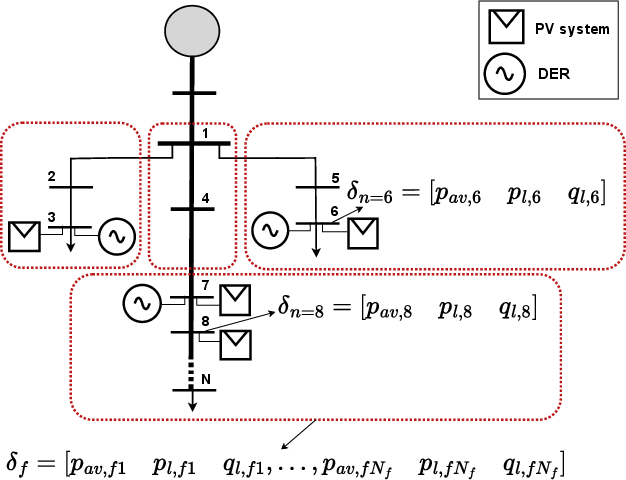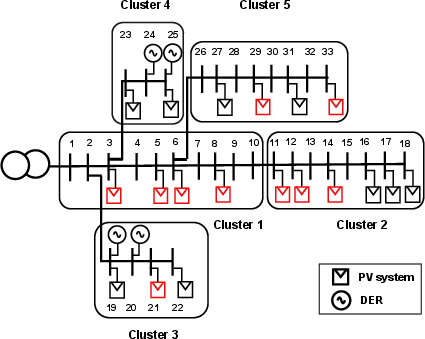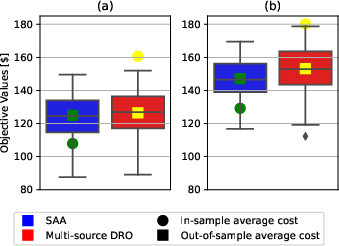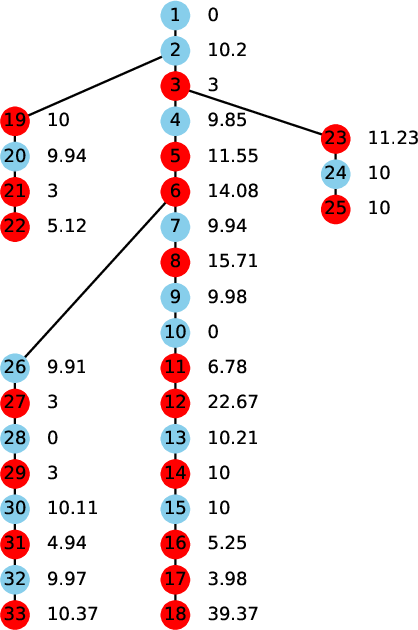- The paper introduces a novel AC optimal power flow model that integrates data quality metrics to assess decision sensitivity and operational risks.
- It employs chance-constrained CVaR formulation and Wasserstein distance to robustly manage uncertainty in distribution systems.
- Numerical studies on an IEEE 33-bus system reveal that improved data quality lowers worst-case expected costs during critical periods.
Analysis of Data Value in Stochastic Optimal Power Flow for Distribution Systems
Introduction
The paper "Analysis of Data Value in Stochastic Optimal Power Flow for Distribution Systems" (2406.13148) addresses the critical issue of data utilization in electric power distribution systems amidst growing concerns over data privacy and quality. It introduces a method for quantifying the usefulness and value of data in decision-making processes related to stochastic optimal power flow (SOPF) in distribution networks. The focus is on integrating a data quality metric into an AC OPF model for radial distribution systems and utilizing this information to assess data relevance and decision sensitivity regarding data quality.
The core of the paper is the derivation of an AC optimal power flow model incorporating stochastic parameters and data quality metrics. This model captures the clustered provision of data by resource aggregators and utilizes a chance-constrained formulation to handle uncertainty. The model is designed to process information on the quality of data received from multiple sources, thereby facilitating more reliable and privacy-conscious decision-making.
The technical implementation is rooted in a reformulation using conditional value-at-risk (CVaR) to enforce constraints involving probabilistic guarantees. This data-driven approach ensures that decisions are not only optimal given the available data but also robust to the inherent uncertainties.

Figure 1: Schematic of notations for clusters and nodes. Each node provides key data points relevant to SOPF.

Figure 2: Schematic of the modified IEEE 33-bus system with clustering for data provisioning under varying photovoltaic (PV) scenarios.
Data Quality and Decision Sensitivity
A significant contribution of the paper is the definition of a framework to quantify the sensitivity of decision outcomes to variations in data quality, using what the authors term as "marginal value of data quality." By assessing this value, distribution system operators (DSOs) can determine how much their decisions rely on the accuracy of the provided data.
The analysis hinges on estimating the Wasserstein distance between the empirical distribution supported by the data and the true distribution, providing a measure of data quality. This information serves to guide investments in data acquisition and inform the development of strategies that balance data privacy and operational efficiency.
Numerical Case Studies
The IEEE 33-bus test system is used to demonstrate the efficacy of the proposed model. Scenarios with varying levels of photovoltaic (PV) penetration and load conditions are evaluated to elucidate the relationship between data quality and value. Notably, the paper finds that data quality significantly influences decision robustness, and hence, can guide compensation strategies for data providers.

Figure 3: Out-of-sample cost distribution comparing SAA and multi-source DRO approaches in different PV and load conditions.
The case studies reveal that the marginal value of data quality peaks during critical periods of high uncertainty, and the model consistently achieves lower worst-case expected costs compared to more naïve approaches that ignore data quality metrics.
Conclusion
This research highlights the inherent value of data in distribution system operations, specifically under uncertainty and varying data quality conditions. It provides DSOs with a tool to systematically evaluate and prioritize data from different sources, ultimately enhancing decision-making processes. The paper sets a foundation for further exploration of data monetization frameworks and advances the integration of privacy-preserving techniques in power system management strategies.

Figure 4: Schematic display of the sensitivity of decision outcomes to changes in data quality at various nodes in the modified IEEE 33-bus system.
The methodological advancements presented hold promise for facilitating transparent and equitable data valuation practices, crucial as the sector advances towards more data-driven and digitized operations. Future exploration could extend these concepts to broader applications, including the potential for automated data pricing mechanisms in power systems.





